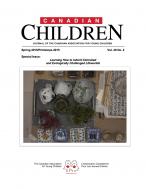Possibilities for Geontological Learning in Common Worlds
Abstract
In this article I examine the productive relations between Elizabeth Povinelli’s notion of learning-‐how and the pedagogical provocations proposed by the Common World Childhoods Research Collective. First, I encourage a move from thinking about the child as subject-‐object-‐other of early childhood education to thinking about relational becomings in common worlds. Second, I draw on Povinelli’s work to propose a form of geontological learning that shifts from learning-‐about to learning-‐with a range of existents. Geontological learning attends to the thick enmeshment of nonhuman geographies, more-‐than-‐human existents, and human lives in the quirky, messy, complex common worlds we co-‐inhabit.Downloads
Metrics
No metrics found.
Copyright (c) 2015 Emily Ashton

This work is licensed under a Creative Commons Attribution-NonCommercial 4.0 International License.
Authors contributing to the Journal of Childhood Studies agree to release their articles under the Creative Commons Attribution-Noncommercial 4.0 International license. This licence allows anyone to share their work (copy, distribute, transmit) and to adapt it for non-commercial purposes provided that appropriate attribution is given, and that in the event of reuse or distribution, the terms of this license are made clear.
Authors retain copyright of their work and grant the journal right of first publication.
Authors are able to enter into separate, additional contractual arrangements for the non-exclusive distribution of the journal's published version of the work (e.g., post it to an institutional repository or publish it in a book), with an acknowledgement of its initial publication in this journal.






